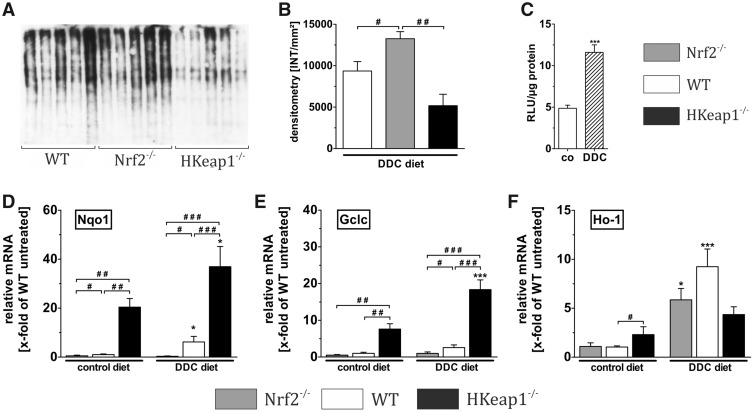Figure 4.
Nrf2 regulates cytoprotective proteins. To figure out the underlying mechanisms of Nrf2-mediated protection against DDC diet, we analyzed oxidative stress-associated protein carbonylation via OxyBlot technique, which is depicted in (A) with the resulting densitometry results shown in (B). DDC-induced Nrf2 activation was confirmed by ARE-luciferase reporter gene assays with control and DDC-treated ARE-luciferase mice as depicted in (C). The mRNA expression of essential cytoprotective targets was analyzed. These analyses included the expression of important Nrf2 target genes that are involved in the oxidative stress defense such as (D) Nqo1: NADP(H) dehydrogenase quinone 1, (E) Gclc: glutamate-cysteine ligase catalytic subunit, and (F) Ho-1: heme oxygenase-1. DDC treatment regiments: A, B, D–H treatment for 4 weeks; C treatment for 5 days. Data = mean + SEM, OxyBlot, n = 6, reporter gene assay, n = 5, qRT-PCR, n = 6; *p < .05 and ***p < .001 versus control diet; #p < .05, ##p < .01, and ###p < .001 as indicated.

